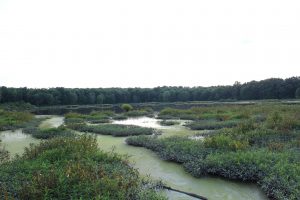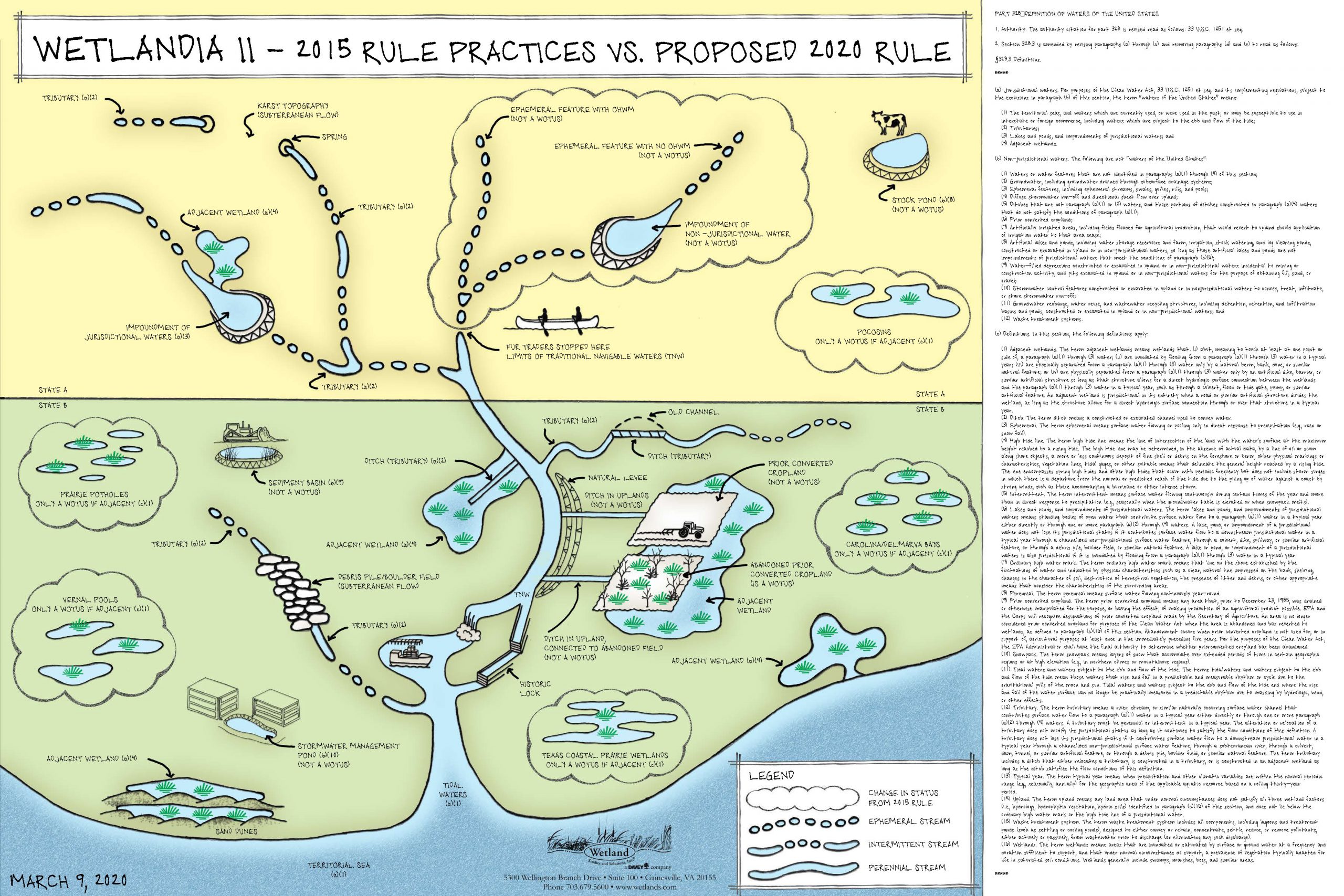UPDATE: WOTUS, WOTUS Everywhere, But Maybe Not?
On April 21, 2020, the U.S. Environmental Protection Agency (EPA) and the U.S. Army Corps of Engineers (Corps) finalized the “Definition of Waters of the U.S.” and published the Final Rule; the Rule will become effective on June 22, 2020. This is the last step in the Trump administration’s actions to repeal the 2015 Definition issued under the Obama administration and to implement a new definition (read the history in our Field Notes articles listed at the bottom of this page). The administration is touting the new Rule as a huge win for landowners and developers, while environmental associations are labeling the new Rule as a huge detriment to water quality and environmental protection. In this issue of Field Notes we take a deeper dive and see what it really means to our clients in Virginia, Maryland and beyond.
The New Rule Summarized
 The new Rule takes jurisdiction over: 1) territorial seas and tidal waters, 2) tributaries, 3) lakes and ponds, and impoundments of jurisdictional waters, and 4) adjacent wetlands. The Final Rule defines jurisdictional waters of the U.S. (WOTUS) in a much more limited fashion than the recently repealed 2015 Rule, and also eliminates some of the tests that were introduced as a result of the Rapanos and Carabell supreme court cases. Gone is the 1,500-foot rule for neighboring waters, along with the significant nexus determination, and a number of additional features that were specifically named in the 2015 Rule. Consequently there will be more isolated wetland determinations.
The new Rule takes jurisdiction over: 1) territorial seas and tidal waters, 2) tributaries, 3) lakes and ponds, and impoundments of jurisdictional waters, and 4) adjacent wetlands. The Final Rule defines jurisdictional waters of the U.S. (WOTUS) in a much more limited fashion than the recently repealed 2015 Rule, and also eliminates some of the tests that were introduced as a result of the Rapanos and Carabell supreme court cases. Gone is the 1,500-foot rule for neighboring waters, along with the significant nexus determination, and a number of additional features that were specifically named in the 2015 Rule. Consequently there will be more isolated wetland determinations.
Jurisdictional tributaries are now limited to only perennial and intermittent streams; ephemeral streams are now specifically excluded. Adjacent wetlands must be touching a tributary, lake, pond, or impoundment, or must be inundated by flooding from one of these features in a typical year. There is an additional list of excluded features that were not in previous rules but were first generally incorporated in the 2015 Rule.
WSSI has developed a graphic to illustrate the differences between 2015 Rule practices and the 2020 Rule: Wetlandia II. (click here for a pdf you can download and enlarge)

Effects on your projects
Will this really have the effects that people are shouting about? In Maryland, Virginia, and North Carolina not much change is anticipated. While the federal agencies (i.e., the Corps and the EPA) will be reducing their reach regarding which features will be jurisdictional, state agencies will still have the same jurisdiction as before. So instead of getting permits from the different agencies that are similar (in terms of impacts), impacts may just shift to the state permit.
One noteworthy difference is that the Maryland Department of the Environment does not currently regulate ephemeral streams, so there could be a loss of protection for those streams in Maryland since they will not be regulated on a state or federal level.
Projects in states without programs to protect isolated waters and states with lots of ephemeral streams (e.g. Arizona) will see a much more significant effect, because so many features will no longer be protected at a federal level.
Potential issues raised by the new rule
The new rule wades into some waters (pun intended) that previous versions did not. While definitions for perennial, intermittent, and ephemeral streams are provided, the rule does not provide any methodology for determining the flow regime in the field. The commentary mentions that the onus will be on the Corps to make the final determination. This could lead to some delays if the determination is critical to the permitting of the project. It could also conflict with states with buffer rules such as North Carolina where in some watersheds intermittent streams have buffers while ephemeral streams do not.
Questions?
We will continue to track this Rule through implementation, recognizing that it may get stalled in litigation (which is likely). Please reach out to Ben Rosner or Mark Headly in our Gainesville, Virginia office, Bob Kerr in our Virginia Beach office, or Mike Klebasko in our Millersville, Maryland office with any questions you may have regarding this issue or for any of your wetland delineation and permitting needs.
You can read about changes to the WOTUS definition in our previous Field Notes articles:
- WOTUS, WOTUS Everywhere, But Maybe Not?, January 27, 2020
- 2015 Waters of the U.S. Rule Repealed, September 13, 2019
- WOTUS, WOTUS, Everywhere… or Not?, March 7, 2019
- Waters of the U.S.: New Definition Proposed, December 11, 2018
- WOTUS Definition in Limbo – EPA Delays Return to Pre-2015 Definition, November 8, 2018
- Federal Ruling Creates Delay in Corps of Engineers Process, August 23, 2018
- 6th Circuit Court Vacates WOTUS Rule Stay, April 11, 2018
(Reprinted with permission from the National Association of Home Builders. This article originally appeared in the February 28, 2018 edition of NAHB Now.) - WOTUS 2020 – EPA and Department of the Army Delay Clean Water Rule of 2015, February 23, 2018
- A Graphic Description of WOTUS – Wetlandia, July 9, 2015
- EPA and COE Redefine Which Wetlands and Streams are Federally Regulated, June 2, 2015
